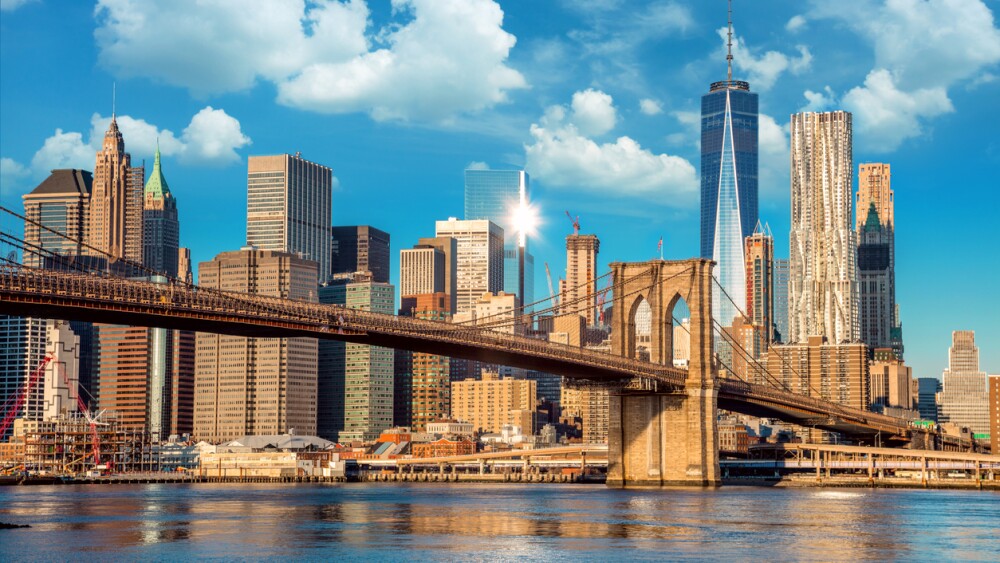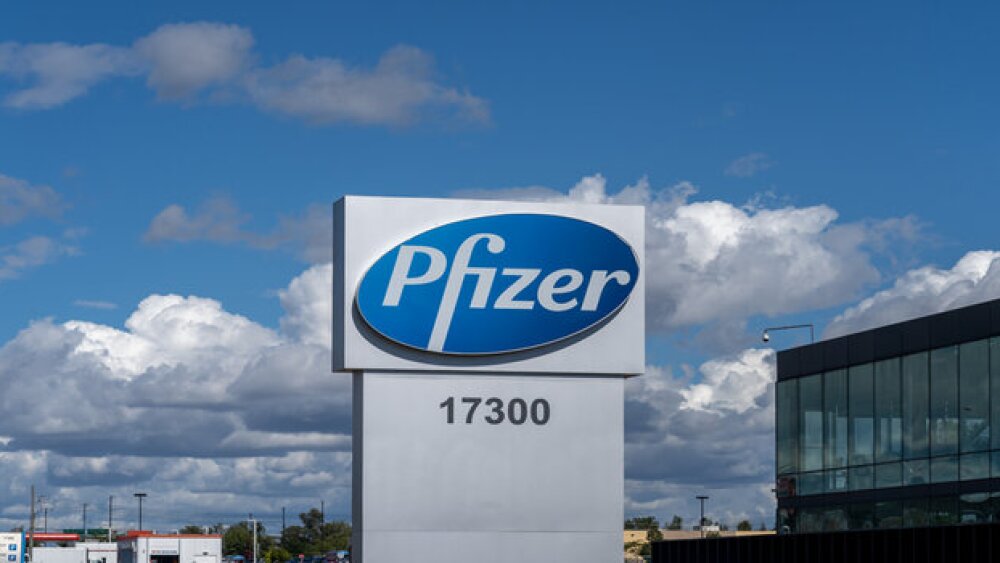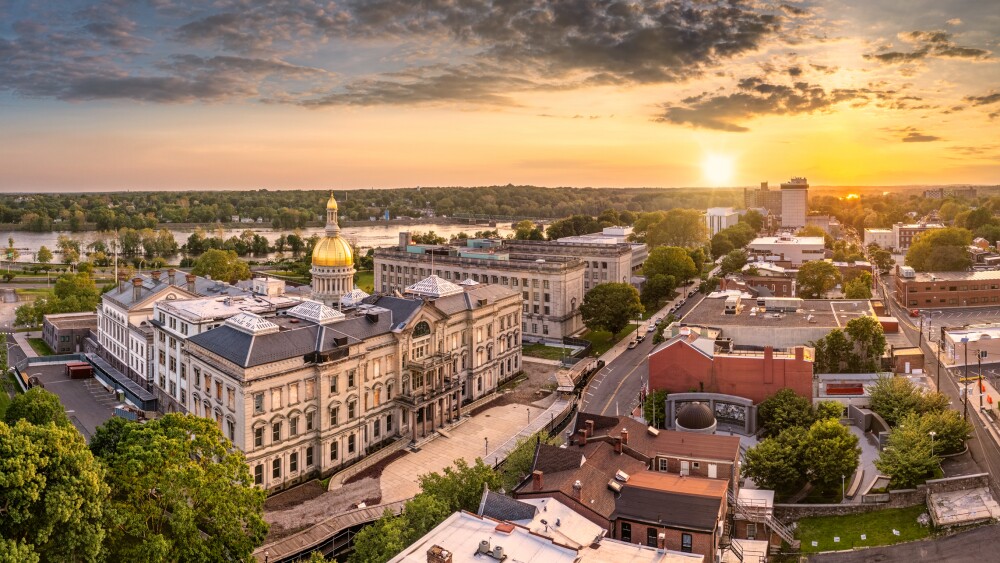New York City has seen increased life sciences employment during the past decade as public funding and key projects like JLABS @ NYC have given the area a boost. A Partnership Fund for New York City executive discusses the city’s strengths and a notable challenge facing businesses.
Within the U.S. life sciences scene, New York City has not quite reached the level of industry hubs such as Boston, San Diego or San Francisco. However, the city has made key strides in recent years, according to the Partnership Fund for New York City’s recently published industry report.
Life sciences employment, for example, has increased 4% annually from 2014 to 2024, the report noted. Even though it declined from a peak of 19,000 jobs in 2022 to 17,700 last year, employers still added a net 5,400 positions in New York City over the past decade.
From a real estate perspective, the report noted that since 2016 and especially over the past five years, the amount and type of wet lab space in the city has expanded. For example, the total stock of lab-exclusive space doubled from 1.48 million square feet at the end of 2019 to 2.93 million square feet as of second-quarter 2025.
As to its economic impact, the New York City life sciences industry’s contribution to gross city product expanded 8% annually from 2014 to 2024, rising from $2.3 billion to $4.9 billion, according to the report.
Asked to describe the city in relation to its life sciences scene, Partnership Fund for New York City President and CEO Maria Gotsch described it to BioSpace as a tall teenager.
“We had a really good growth spurt, but we’re still a teenager,” she said.
Explaining the analogy, Gotsch noted that just as teens will have done something just once in their life so far, there are scientists in New York City starting companies for the first time. So, she said, the city doesn’t yet have the same depth and extensive network of experienced life sciences entrepreneurs as places such as Boston or San Francisco.
As an example, she shared that “In Boston, you’ve got somebody who was a scientist 25 years ago and in the interim has worked at three companies, and so they just have that kind of muscle of how do you start a company? What does it take? They’ve had, presumably, some success and some failure, both of which are valuable experiences for your next company.”
New York City Strong Part of State’s Life Sciences Scene
New York City has a significant presence in the state’s life sciences scene. As of Dec. 31, the city represented 33% of New York’s businesses in that sector, with 1,206 companies, according to the report. In addition, the city’s life sciences businesses increased an average of 5% annually over the past decade.
There are two key assets powering the sector’s growth in New York City, according to Gotsch. The first is academic institutions, which include New York University and Columbia University.
“They have world-class research scientists at scale and are the engine and the source of a lot of the technology that gets spun out into companies to drive the life sciences business,” Gotsch said.
The second asset she identified is the city’s deep entrepreneurial infrastructure, which includes venture capital dollars, service providers such as lawyers and people who’ve been entrepreneurs at early-stage companies. While Gotsch said the infrastructure is stronger in the tech sector than in life sciences, she noted that life sciences can build off of tech.
City’s Culture, Depth Beyond Life Sciences Draws Talent
A significant benefit of being a life sciences business in New York City is that the area is a huge draw for life sciences talent given its diversity beyond the sector and its culture, according to Gotsch.
“I think that’s attractive to people that you come to New York, and you have your heads down working in your narrow field, but you can pull your head up on the weekends or in the evenings and go do something completely different and be kind of outside of your narrow area,” she said. “And I think as you talk to entrepreneurs, that’s often something that they cite is they like the diversity of New York and the fact that it’s not just all tech or all life sciences. You’ve got the arts, you’ve got finance, you’ve got a variety of different areas that you can interact with.”
Regarding the cultural scene specifically, Gotsch said it can be a draw not only for younger talent just coming out of college but also empty nesters who want to spend time in the city.
Funding, Projects Like JLABS Fuel Growth
Several funding initiatives and projects have been a key part of New York City’s life sciences growth in the past decade, according to Gotsch. From a public-sector funding perspective, for example, in 2016, the New York City Economic Development Corporation created LifeSci NYC, a $1.1 billion initiative to establish the city as a global life sciences leader. The initiative focuses on three key areas: talent, funding and space. In 2021, the city doubled its $500 million investment in LifeSci NYC to $1 billion.
From a broader perspective, life sciences venture capital funding in the state rose from $311 million in 2014 to $2.4 billion in 2024, a 700% increase.
Regarding key projects in the city, Gotsch pointed to a few, including JLABS @ NYC, a collaboration between Johnson & Johnson, the state of New York and the New York Genome Center. The state of New York provided $17 million in funding for the 30,000-square-foot incubator, which opened in 2018. Gotsch noted that JLABS was an important validation of New York City within life sciences, as it signaled that Johnson & Johnson saw the city’s promise in the sector.
Other projects Gotsch mentioned include BioLabs at NYU Langone and IndieBio New York. BioLabs, which opened in 2019, is a co-working facility for early-stage life sciences companies. IndieBio New York, a startup development program that began in San Francisco, debuted in New York City in 2020. The Partnership Fund for New York City helped launch IndieBio, teaming up with the state to assist venture fund SOSV in bringing the program to the city.
Funding Environment a Challenge, Especially for Early-Stage Companies
While New York City’s life sciences scene has grown over the past decade, it faces a significant challenge, according to Gotsch: the general funding environment. For example, the report noted that as of mid-June, state institutions have had 309 National Institutes of Health (NIH) grants terminated, accounting for $487 million in lost funding. Gotsch said those cuts are a big risk not only for the city but life sciences overall, as the dollars are a major funder of innovation.
As to venture capital limitations, she said early-stage companies are feeling the biggest impact, as the funding focus is on businesses with existing assets that are closer to the clinic and have shorter pathways to exits.
Even though the funding environment is challenging, New York City’s life sciences sector can have a good recovery, according to Gotsch. When that would happen, she said, depends on how drastic the NIH funding cuts are at the city’s academic institutions and when the IPO markets open.
Still, Gotsch added, “There’s a very strong base of enabling support and infrastructure for the industry in New York City that wasn’t here 10 years ago. So, as the industry starts to recover, you have good things in place to support that recovery.”
Want more job market insights? Subscribe to Career Insider to receive our quarterly life sciences job market reports, career advice and more.






